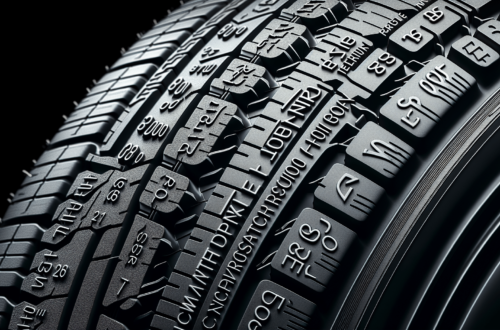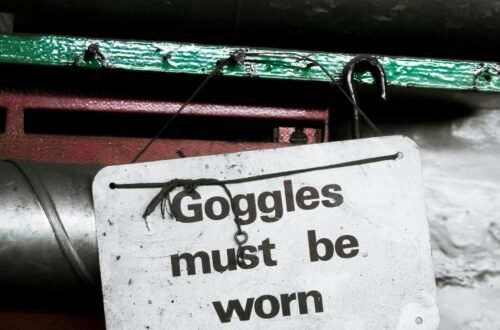Are you confident that your tires are safe for the road? Ensuring the safety of your vehicle starts with regular tire inspections. In this article, we will provide you with an essential tire inspection checklist that will help you identify any potential issues before they become major safety hazards. From checking the tire tread depth to inspecting for signs of wear and tear, this checklist will arm you with the knowledge to keep your tires in top-notch condition. Get ready to hit the road with confidence, knowing that you’ve taken the necessary steps to protect your safety and that of your passengers.
Tire Pressure

This image is property of images.pexels.com.
Checking tire pressure regularly
One of the most important aspects of tire maintenance is ensuring that your tires are properly inflated. Incorrect tire pressure can have a significant impact on both the performance and safety of your vehicle. It is crucial to regularly check your tire pressure to ensure that it is within the manufacturer’s recommended range.
To check your tire pressure, you will need a tire pressure gauge. These are inexpensive and easy to use. Simply remove the valve cap from the tire, place the gauge onto the valve stem, and press firmly until you get a reading. This will tell you the current tire pressure.
Using a tire pressure gauge
Using a tire pressure gauge is a simple process that can help you maintain optimal tire pressure. Make sure you follow these steps:
- Remove the valve cap from the tire.
- Place the nozzle of the tire pressure gauge onto the valve stem.
- Press firmly until the gauge gives you a reading.
- Compare the reading to the recommended tire pressure specified by the manufacturer.
- If the pressure is too low, add air until it reaches the proper level. If it is too high, release some air until it reaches the correct pressure.
By regularly checking your tire pressure using a gauge, you can ensure that your tires are properly inflated, which promotes better fuel efficiency, improved handling, and reduced risk of a blowout.
Maintaining proper tire pressure
Once you have checked your tire pressure and ensured that it is at the recommended level, it is crucial to maintain it. Tire pressure can naturally decrease over time, so it is important to regularly check and adjust it as needed.
Here are some tips for maintaining proper tire pressure:
- Check your tire pressure at least once a month or before long trips.
- Follow the recommendations provided by the vehicle manufacturer regarding the ideal tire pressure.
- Keep a tire pressure gauge in your vehicle for convenience.
- Monitor your tire pressure during extreme temperature changes, as temperature fluctuations can impact the pressure within the tires.
- Remember to check the spare tire’s pressure as well, as it can also lose air over time.
By regularly maintaining proper tire pressure, you can maximize the lifespan of your tires, improve fuel efficiency, and ensure a safer driving experience.
Tire Tread Depth
Measuring tire tread depth
The tread on your tires is essential for providing grip and traction on the road. Over time, the tread will naturally wear down, leading to reduced traction and increased risk of accidents. It is crucial to regularly measure your tire tread depth to ensure it is within safe limits.
To measure tire tread depth, you can use the “penny test.” Insert a penny into the tread groove of your tire with Lincoln’s head facing downward. If you can see the top of Lincoln’s head, it is time to replace your tires. If Lincoln’s head is partially covered, your tread depth is still within an acceptable range. However, it is recommended to replace tires once the tread depth reaches 2/32 of an inch for optimal safety.
Checking for signs of wear
In addition to measuring the tread depth, it is essential to visually inspect your tires for signs of wear. Check for any irregular wear patterns, such as cupping, feathering, or uneven wear on the edges. These patterns can indicate alignment issues or other problems that need to be addressed.
Inspect the entire surface of each tire to ensure there are no bulges, gouges, or other signs of damage that could compromise the integrity of the tire. It is also important to check for any embedded objects, such as nails or glass, that could lead to a puncture or blowout.
Replacing tires with insufficient tread depth
When your tires’ tread depth reaches the minimum recommended level or shows signs of excessive wear, it is crucial to replace them promptly. Tires with insufficient tread depth lose their ability to provide adequate traction, especially on wet or slippery roads, increasing the risk of hydroplaning or losing control of your vehicle.
Investing in new tires may seem costly, but it is a crucial aspect of maintaining your vehicle’s safety. The expense of new tires is insignificant when compared to the potential consequences of driving on worn-out tires.
Tire Sidewall Condition
Inspecting sidewalls for bulges and cuts
The sidewalls of your tires play a vital role in supporting the weight of your vehicle and maintaining stability. Therefore, it is crucial to inspect them regularly for any bulges or cuts that may indicate tire damage.
Bulges on the sidewall can indicate an internal issue, such as a separation of the tire’s layers or damage to the sidewall’s structure. If you notice any bulges, it is important to have the tire inspected by a professional as soon as possible, as it could lead to a sudden blowout.
Checking for cracks or damage
In addition to bulges, it is important to check for cracks or other visible damage on the sidewalls of your tires. These could be a result of hitting potholes, curbs, or other road hazards.
Cracks on the sidewalls can weaken the tire’s structure, increasing the risk of tire failure. If you notice any cracks, it is advisable to have the tire inspected by a professional to determine if it needs to be replaced.
Addressing any sidewall issues
If you discover any issues with your tire sidewalls, it is crucial to address them promptly. Damaged sidewalls compromise the structural integrity of the tire, increasing the likelihood of a blowout or other tire failure while driving.
In the event of sidewall damage, consult a tire professional for guidance on whether the tire can be repaired or if it requires replacement. Remember, your safety and the safety of others on the road should always be your top priority.
Tire Rotation
Understanding the importance of tire rotation
Tire rotation is a vital part of overall tire maintenance. It involves moving the tires to different positions on the vehicle to ensure even wear and maximize their lifespan. By regularly rotating your tires, you can achieve more uniform wear, resulting in improved performance, longer tire life, and better fuel efficiency.
Following the manufacturer’s guidelines
To effectively rotate your tires, it is important to follow the tire rotation pattern recommended by the vehicle manufacturer. Different vehicles have different tire rotation patterns based on factors such as front-wheel drive, rear-wheel drive, or all-wheel drive. Consult your vehicle’s owner’s manual or tire manufacturer’s guidelines to determine the appropriate rotation pattern for your specific vehicle.
Hiring a professional for tire rotation
While some vehicle owners may feel comfortable rotating their tires themselves, it is often beneficial to have this service performed by a professional technician. Tire rotation requires specialized tools and expertise to ensure it is done correctly.
By hiring a professional for tire rotation, you can have peace of mind knowing that your tires are being rotated according to the manufacturer’s guidelines. Additionally, a professional technician may identify any potential issues during the rotation process, such as abnormal wear patterns or alignment problems, allowing for timely repairs or adjustments.
Wheel Alignment

This image is property of images.pexels.com.
Recognizing signs of misalignment
Wheel alignment refers to the proper positioning of the wheels relative to each other and the vehicle. When your vehicle’s wheels are misaligned, it can lead to uneven tire wear, reduced fuel efficiency, and compromised handling.
Here are some signs that may indicate your vehicle is in need of a wheel alignment:
- Uneven or rapid tire wear
- Vehicle pulling to one side while driving
- Steering wheel vibration or shaking
- Off-center steering wheel when driving straight
- Squealing tires or increased road noise
If you notice any of these signs, it is advisable to have your vehicle’s wheel alignment checked by a professional technician.
Getting a professional alignment
While some vehicle owners may attempt to adjust the wheel alignment themselves, it is generally recommended to have this task performed by a professional. Wheel alignment requires specialized equipment and expertise to ensure accurate adjustment.
A professional alignment service typically involves adjusting the angles of the wheels to the manufacturer’s specifications. This ensures that the tires make proper contact with the road, providing optimal performance, safety, and fuel efficiency.
Regularly checking alignment
Even if you haven’t noticed any signs of misalignment, it is still recommended to have your vehicle’s alignment checked periodically, especially after hitting a significant pothole, curb, or undergoing suspension repairs. By regularly checking your alignment, you can catch any potential issues early and address them before they cause further damage to your tires or vehicle.
Valve Stems
Inspecting valve stems for damage
Valve stems are crucial components that allow for proper inflation and deflation of your tires. Over time, the valve stems can become damaged or worn, leading to air leakage and potential tire pressure issues.
It is important to regularly inspect your valve stems for signs of damage, such as cracks, cuts, or deterioration. Additionally, check for any signs of leakage around the valve stem or valve cap. If you notice any damage or leakage, it is advisable to have the valve stem replaced promptly.
Ensuring valve stems are tightly secured
In addition to inspecting for damage, it is important to ensure that your valve stems are tightly secured to the tire. Loose valve stems can also lead to air leakage and pressure loss.
Check that the valve stems are securely attached to the tire and tightened to the recommended torque specifications. If you are unsure about the proper tightness or if you notice any looseness, consult a tire professional for assistance.
Replacing damaged valve stems
If you discover any damage or signs of leakage on your valve stems, it is important to have them replaced by a professional. Attempting to repair or replace valve stems yourself can lead to improper installation, compromising the integrity of the tire and risking further damage.
A tire professional can ensure that the valve stems are replaced correctly, preventing air leakage and maintaining proper tire pressure.
Spare Tire Check

This image is property of images.pexels.com.
Inspecting spare tire condition
Most vehicles come with a spare tire, which is intended for temporary use in the event of a flat or punctured tire. However, spare tires can also undergo wear, aging, or damage over time, so it is crucial to inspect them regularly.
Check the spare tire for signs of cracks, cuts, or bulges on both the sidewall and tread surface. Additionally, ensure that the spare tire is properly inflated and matches the recommended tire pressure specified by the vehicle manufacturer.
Checking spare tire pressure
The spare tire is only useful if it is in good condition and properly inflated. Therefore, it is important to regularly check the spare tire’s pressure, just like you would with your regular tires.
Use a tire pressure gauge to measure the spare tire’s pressure and compare it to the recommended pressure specified by the vehicle manufacturer. If the spare tire pressure is too low, add air until it reaches the proper level. If it is overinflated, release air until it reaches the recommended pressure.
Replacing an old or damaged spare tire
If you find that your spare tire is old, damaged, or no longer suitable for safe use, it is crucial to replace it promptly. You never know when you may encounter a flat tire or other emergency on the road, and having a reliable spare tire can save you from significant inconvenience and potential danger.
Consult a tire professional to identify the appropriate replacement tire for your spare, ensuring that it matches the size, type, and specifications required for your vehicle.
Tire Balancing
Understanding the importance of tire balancing
Tire balancing is a process that ensures that the weight of the tire and wheel assembly is evenly distributed. When your tires are balanced correctly, it eliminates vibrations and promotes smoother, more controlled driving.
Over time, the balance of your tires can be affected by factors such as uneven wear or changes in weight distribution due to tire changes or repairs. Therefore, it is important to regularly balance your tires to maintain optimal performance and minimize unnecessary wear.
Getting tires balanced by a professional
Tire balancing requires specialized equipment and expertise, making it a task best done by a professional technician. During the balancing process, the technician will use a balancing machine to identify any imbalances and determine the correct placement of counterweights.
A professional tire balancing service will ensure that your tires are balanced correctly, providing a smooth and comfortable driving experience while minimizing unnecessary wear and tear.
Checking tire balance regularly
Although tire balancing should be performed by a professional, it is still beneficial to periodically check the balance of your tires. If you notice any vibrations or shaking while driving, it may indicate that your tires are out of balance.
In such cases, consult a tire professional to have your tires checked and balanced if necessary. Regularly checking tire balance can help identify any issues early on, preventing further damage to your tires and vehicle.
Tire Age
Reading the tire’s manufacturing date
Tires have a limited lifespan, even if their tread depth and overall condition appear to be in good shape. It is important to track and monitor the age of your tires to avoid potential problems.
The manufacturing date of a tire can be found on the sidewall. Look for a four-digit number following the letters “DOT.” The first two digits represent the week of production, while the last two digits indicate the year. For example, if the number reads “2319,” it means the tire was manufactured in the 23rd week of 2019.
Being aware of tire aging signs
Tires age naturally regardless of the amount of use they receive. As tires age, the rubber compounds degrade, compromising their performance and safety. Even if the tread depth is sufficient, an old tire can be prone to failure.
Here are some signs that may indicate your tires are aging and may need replacement:
- Cracks on the sidewall or tread surface
- Bulges or deformations
- Loss of flexibility or increased hardness
- Uneven wear patterns
- Excessive vibration or noise
If you notice any of these signs or if your tires are reaching the manufacturer’s recommended age limit, it is crucial to have them replaced promptly.
Replacing tires based on age
While it is important to monitor your tires’ age, there is no exact mileage or timeframe for when tires should be replaced solely based on age. Different factors, such as climate, storage conditions, and maintenance, can affect the lifespan of a tire.
It is generally recommended to replace tires that are more than six years old, regardless of their overall condition. Consult a tire professional for guidance on when to replace your tires based on their age and other factors specific to your situation.
Weather Conditions
Adapting tire maintenance based on local weather
Your tire maintenance should not be limited to general inspections and regular maintenance. It is also essential to consider your local weather conditions and adapt your tire maintenance accordingly.
In areas with significant temperature fluctuations, it is crucial to monitor your tire pressure more frequently. Cold weather can cause tire pressure to drop, while hot weather can cause it to increase. Maintaining proper tire pressure ensures optimal performance and safety in varying weather conditions.
Using appropriate tires for extreme weather
If you live in an area with extreme weather conditions, such as heavy snow or intense heat, it is advisable to equip your vehicle with tires specifically designed for those conditions. Winter tires, for example, have a unique tread pattern that provides better traction on snow and ice, improving your vehicle’s handling and safety during winter months.
Similarly, in areas with consistently high temperatures, it is recommended to use tires designed for hot weather, such as summer tires. These tires have a specialized rubber compound that can better withstand high temperatures and provide improved performance in hot weather conditions.
Consult a tire professional to determine the most appropriate tire options for your local weather conditions and driving needs.
Replacing tires for specific weather conditions
Regardless of the time of year, it is important to evaluate your tires’ suitability for the upcoming weather conditions. If your tires are not designed for specific weather conditions, such as winter tires for snowy conditions, it is crucial to replace them as needed.
Driving on tires that are not designed for the specific weather conditions can compromise your safety and result in reduced traction, increased braking distances, and loss of control on slippery or wet surfaces.
Prioritize the safety of yourself and others on the road by ensuring that your tires are suitable for the weather conditions you are likely to encounter.





